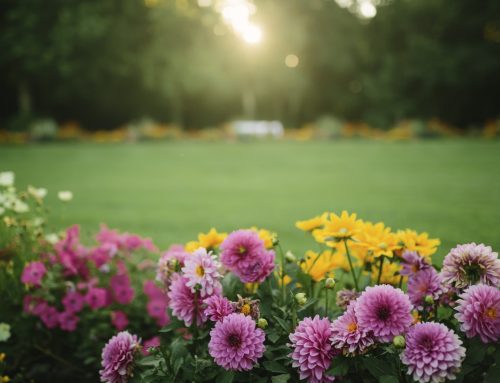Lavender is a beloved herb known for its beautiful fragrance and stunning blooms. While lavender is commonly associated with shrubs or small plants, there are also lavender tree varieties that can add an enchanting touch to your garden or indoor space. If you’re considering growing a lavender tree or already have one in your care, it’s important to understand how to properly nurture and maintain it. In this article, we will explore essential tips and techniques for lavender tree care, including winter care, different types of lavender trees, caring for potted lavender trees, growing and harvesting lavender, and the difference between lavender and a lavender tree. Whether you’re a novice gardener or an experienced lavender enthusiast, this guide will provide valuable insights to help you successfully cultivate and enjoy the beauty of lavender trees.
Types of Lavender
When it comes to lavender tree varieties, there are several options to choose from. Some popular types of lavender trees include Lavandula angustifolia (English lavender), Lavandula stoechas (Spanish lavender), and Lavandula dentata (French lavender). Each variety has its own unique characteristics, including differences in flower color, size, and fragrance. Research the specific needs and preferences of the lavender tree variety you have or plan to grow to provide optimal care and ensure its healthy growth. A professional can also help you choose the right type for your garden or house and provide you the tools to take care of it.
What is the Difference Between Lavender and Lavender Tree?
It’s important to note that there is a difference between lavender and a lavender tree. Lavender typically refers to the herbaceous plant that grows in a bushy or shrub-like form, while a lavender tree is a variety of lavender that has been trained or pruned to grow with a tree-like appearance. The care requirements for both are similar, but lavender trees may require additional attention to maintain their tree shape through regular pruning and shaping.
How to Care for a Lavender Tree in Winter?
One of the first things to consider when caring for a lavender tree is its specific needs, especially during winter. While lavender is known for its resilience, it’s important to protect your lavender tree during colder months, particularly in regions with harsh winters. Proper winter care involves providing adequate insulation by applying a layer of mulch around the base of the tree to protect its roots from freezing temperatures. Additionally, you may consider covering the lavender tree with a frost cloth or burlap to shield it from cold winds and frost. By taking these precautions, you can ensure that your lavender tree survives the winter and regains its vitality when spring arrives.
Lavender in Pots
For those who prefer growing lavender trees in pots or containers, it’s essential to follow specific care guidelines. Potted lavender trees require well-draining soil to prevent waterlogging, as excessive moisture can lead to root rot. Use a potting mix designed for lavender or create a well-draining mixture by combining soil, sand, and perlite. Place the potted lavender tree in a sunny location where it can receive at least six hours of direct sunlight per day. Remember to water the tree sparingly, allowing the soil to dry out between waterings. Regular pruning will help maintain the tree’s shape and encourage bushier growth.
Growing and Harvesting Lavender
Growing and harvesting lavender is a rewarding experience, as it provides not only visual beauty but also aromatic delight. Lavender trees can be grown from seeds, cuttings, or purchased as young plants from nurseries. When planting a lavender tree, choose a location with full sun exposure and well-draining soil. Lavender thrives in soil with a slightly alkaline to neutral pH, so consider testing and adjusting the soil if needed. Space the trees adequately to allow air circulation and prevent diseases. Regularly trim faded blooms to encourage continuous flowering and harvest the lavender flowers when they are in full bloom but before they start to fade. Dry the harvested flowers by hanging them upside down in a cool, dark, and well-ventilated area.
In your quest to create a thriving lavender tree, don’t hesitate to seek professional guidance and assistance. A reputable landscaping company can provide expert advice tailored to your specific needs and help you create a stunning lavender-filled landscape or a thriving potted lavender tree. Whether you require assistance with planting, maintenance, or design, Cutters Edge expertise can make a significant difference in the success of your lavender tree endeavors. Contact us today for a free quote!





